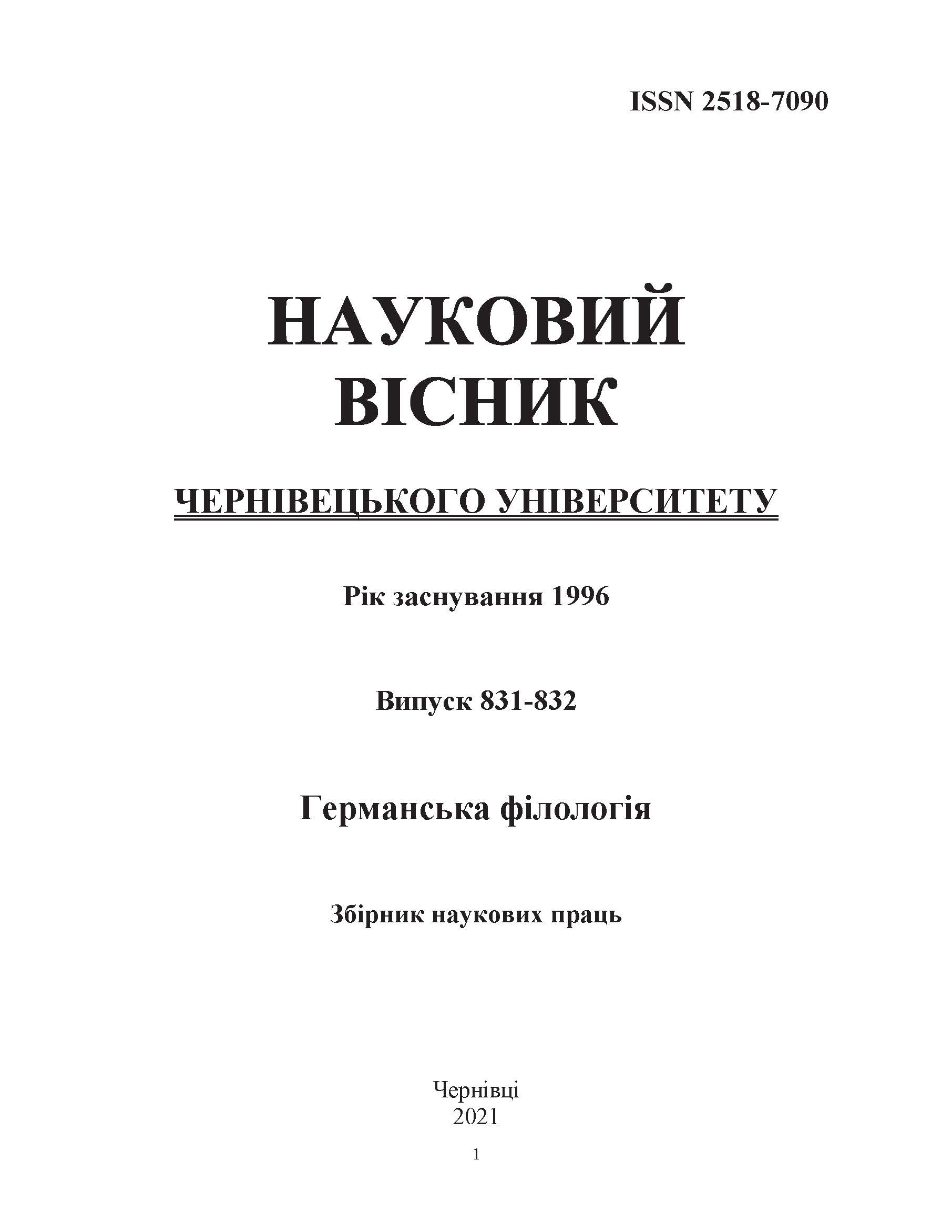COLOR MENTALITY IN THE MIDDLE AGES: principles of medievalist cognitive-quantitative comparative reconstruction (based on Old High German and Middle High German texts)
DOI:
https://doi.org/10.31861/gph2021.831-832.3-12Keywords:
medieval studies, color mentality, cognitive-quantitative comparative reconstruction, synergy, holistic paradigm, trichotomy, post-nonclassical linguistics, “new philology”Abstract
The article focuses on theoretical concepts and their inter categorical interaction in the process of medieval cognitive-quantitative comparative reconstruction of color mentality in the Middle Ages.
The authors point out that the reconstruction of the mentality of this period, which represents part of the culture, should be guided by a holistic method using formalized-quantitative methods, as deep symbolism permeated the lives of speakers of the German Middle Ages at all levels.
The article also states that to describe the mentality as an expression of culture, it is advisable to choose important linguistic and cultural categories such as separate modules (eg, color notation) in the language picture of the world. The article notes that both in the texts and in the dictionaries the language picture of the world is represented by words and phrases grouped by semantics into multi- part lexical-phraseological fields. The authors of the article found that the reconstruction covers all linguistic means related to different, as a rule, the main parts of speech, which reflected historically the ancient syntagmatic thinking and its syncretism.
Reconstruction as a process and result of hypothetical reproduction or establishment of certain, mostly non-existent characteristics of the medieval mentality is proposed to be carried out on three levels: 1) through the analysis of literary remembrances; 2) through the analysis of certain patterns of the language picture of the world; 3) through etymological and semantic analysis of words.
At the same time, the article proposes to consider the holistic paradigm as the basis of the "new philology", which is defined as a combination of linguistics and literary studies, culturology, logic, ethnolinguistics and psychology.
In the future, a comprehensive study of Old High German and Middle High German words according to these principles and using formalized quantitative methods will help to determine not only their linguistic and cultural peculiarities, but also to establish objectively the language picture of the world of the Middle Ages on the background of its culture.





